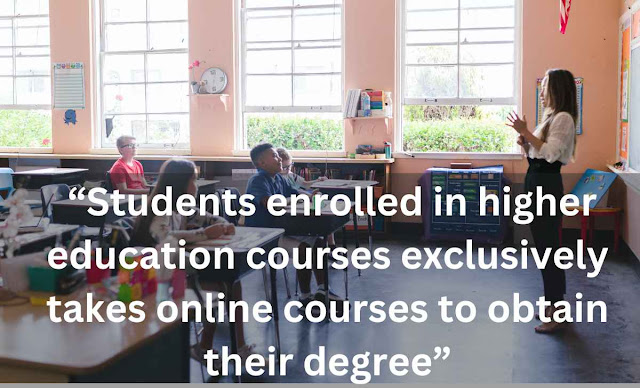In other areas of the world, technology is advancing rapidly. In this way, the development of technology has been very effective in the field of education as well. Technology has revolutionized the way we teach and learn.
ICT tools, or information and communication technologies, are a type of educational technology that enables collaboration in a learning environment. These tools are specifically designed to facilitate collaboration between students and teachers, making it easier for them to work together.
In this blog post, we'll explore what ICT tools are and how they can be used to create effective collaborations in education. We'll also examine the advantages and disadvantages of using collaboration tools for education, and discuss how these tools can be used to enhance student engagement and learning outcomes.
What are ICT tools?
ICT tools are electronic devices and software applications used to support communication, data sharing, and collaboration. In the world of education, ICT tools can help facilitate effective collaboration between teachers, students, and parents.
ICTs tools have revolutionized the way we work and interact, making it easier than ever to stay connected with colleagues and students. These tools provide a platform for teachers to share materials, students to collaborate on assignments, and parents to stay up-to-date on their children's progress.
There is a wide range of ICT tools available, but some of the most popular include collaboration tools for education such as online forums, web conferencing, and digital learning environments.
The benefits of using ICT tools for collaboration in Education
Some of the primary benefits of using ICT tools for cooperation in education is mention below.
- ICT Tools enable educators to create a collaborative learning platform.
- Teachers can create an environment that encourages students to actively engage with one another and work together to solve problems.
- Through ICT tools, teachers can track student progress and tailor lesson plans accordingly, providing additional support where needed.
- ICT tools allow for real-time feedback from both teachers and students, making the learning process more interactive and eengaging.
- Through online platforms, teachers can create content and assign tasks that can be completed by students both inside and outside the school setting. This makes the learning process much more flexible and accessible, allowing students to work on projects at their own pace.
- Collaborative learning platforms allow students to exchange ideas and information with one another in real time, creating a much more immersive learning experience. Through these platforms, students are able to build relationships and work together to create new ideas and concepts.
The challenges of using ICT tools for collaboration in education
Although ICT tools can be very useful in the classroom, they can also present several challenges when it comes to collaboration.The biggest problems is the lack of a collaborative learning platform. Without this platform, it can be difficult for students and teachers to communicate and collaborate effectively.
Another challenge is that some ICT tools may not be suitable for all students. For example, younger students may struggle to understand how to use the technology or might find it difficult to navigate their way around the system.
However,many ICT tools being used in the classroom, there are concerns about the security of personal data and how secure the system is. It is important to make sure that any ICT tools being used in the classroom are safe and secure before introducing them into the learning environment.
Read More...The Benefits of Integrating ICT in Education
How to Use ICT Tools to Create a Successful Learning Environment?
ICT tools can be used to create a successful learning environment by enabling collaboration in the classroom. A collaborative learning platform allows teachers and students to interact with each other, share resources, and exchange ideas.
There are various tools available, such as video conferencing, webinars, online whiteboards, and document sharing. These tools allow teachers and students to work together in real-time on projects or assignments.
The most effective use of ICT tools is to set up a collaborative learning platform that encourages engagement and communication between teachers and students. This platform should have features that allow students to ask questions, share resources, and collaborate on tasks.
In addition to providing an interactive learning platform, teachers can use ICT tools to assign projects or activities that require collaboration between students. This can involve teams working together to complete a task, or individuals sharing ideas for a project
ICT tools can also be used to enhance communication between teachers and students outside of the classroom. This can provide a space for students to ask questions or share feedback without needing to wait for a scheduled meeting.
How ICT Tools Are Revolutionizing Education and Enhancing Collaboration
The use of ICT tools is revolutionizing education, making it easier than ever to facilitate collaboration between educators, students, and parents. By enabling access to digital resources and engaging collaborative learning platforms, ICT tools enable educators to design innovative and engaging learning experiences.
For example, a teacher can easily upload a lesson plan or handout to a collaborative learning platform and have it instantly available to all students in the class. This saves time for both the teacher and the students, and allows for more effective collaboration in the classroom.
Finally, ICT tools are allowing teachers to deliver personalized instruction to students at any time. With adaptive learning technology, teachers can customize their instruction based on the individual needs of each student.
Read More...How Technology Has Changed Teaching and Learning
Conclusion
ICT tools provide educators and students alike with an effective way to collaborate and learn, leading to better educational outcomes. By providing students with a collaborative learning platform, teachers can empower students to work together in order to achieve their academic goals.
ICT tools can be used to improve communication, collaboration, and productivity among students, making learning more enjoyable and efficient. While there are challenges associated with ICT tools, such as access to technology and technical problems, these challenges can be overcome with proper preparation and support.


